Today everyone wants to be fit, especially since a healthy habits and lifestyle is a good indicator of individual well-being. For this reason, the number of diet app users, as well as mHealth industry revenue, is increasing every year. According to Grand View Research, Inc., the global mHealth market is growing at a CAGR of 44.2%, and by 2025, it will reach 111.8 billion US dollars. If you are looking for a diet app development for a startup, this article is just for you.
In our previous articles, we explained how to build a fitness app. Now, we will dig deeper into how to make a nutrition app, its core features, and development costs.
But first, you need to be aware of the MHealth industry leaders to keep up with.
HEALTHCARE APPS DEVELOPMENT: TYPES, EXAMPLES, AND FEATURES
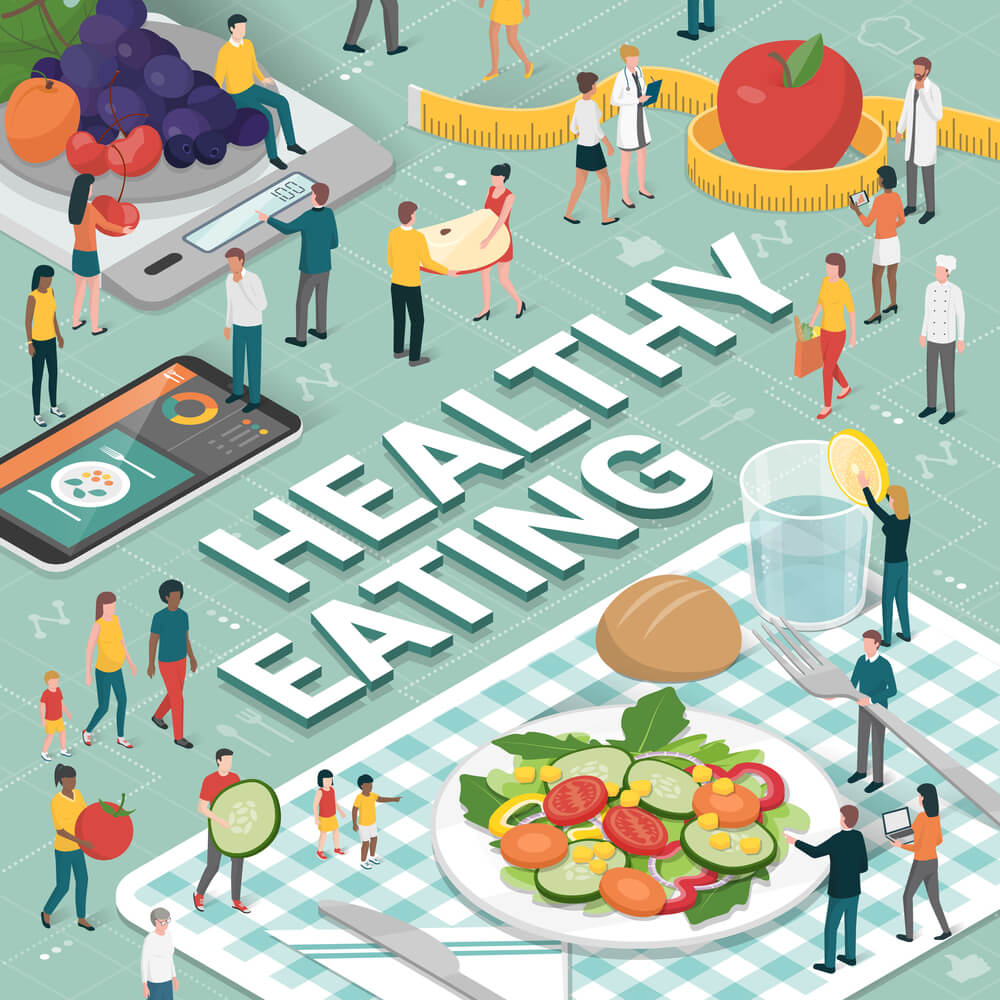
The best healthy diet apps and their features
There is a range of nutrition apps on the market. So, let’s take a closer look at some of the best applications connected to dieting and nutrition apps:
MyPlate Calorie Tracker. This diet tracking app tracks your calories, water intake, and exercise and gives feedback on your fitness and snack goals have food recipes and even workout databases.
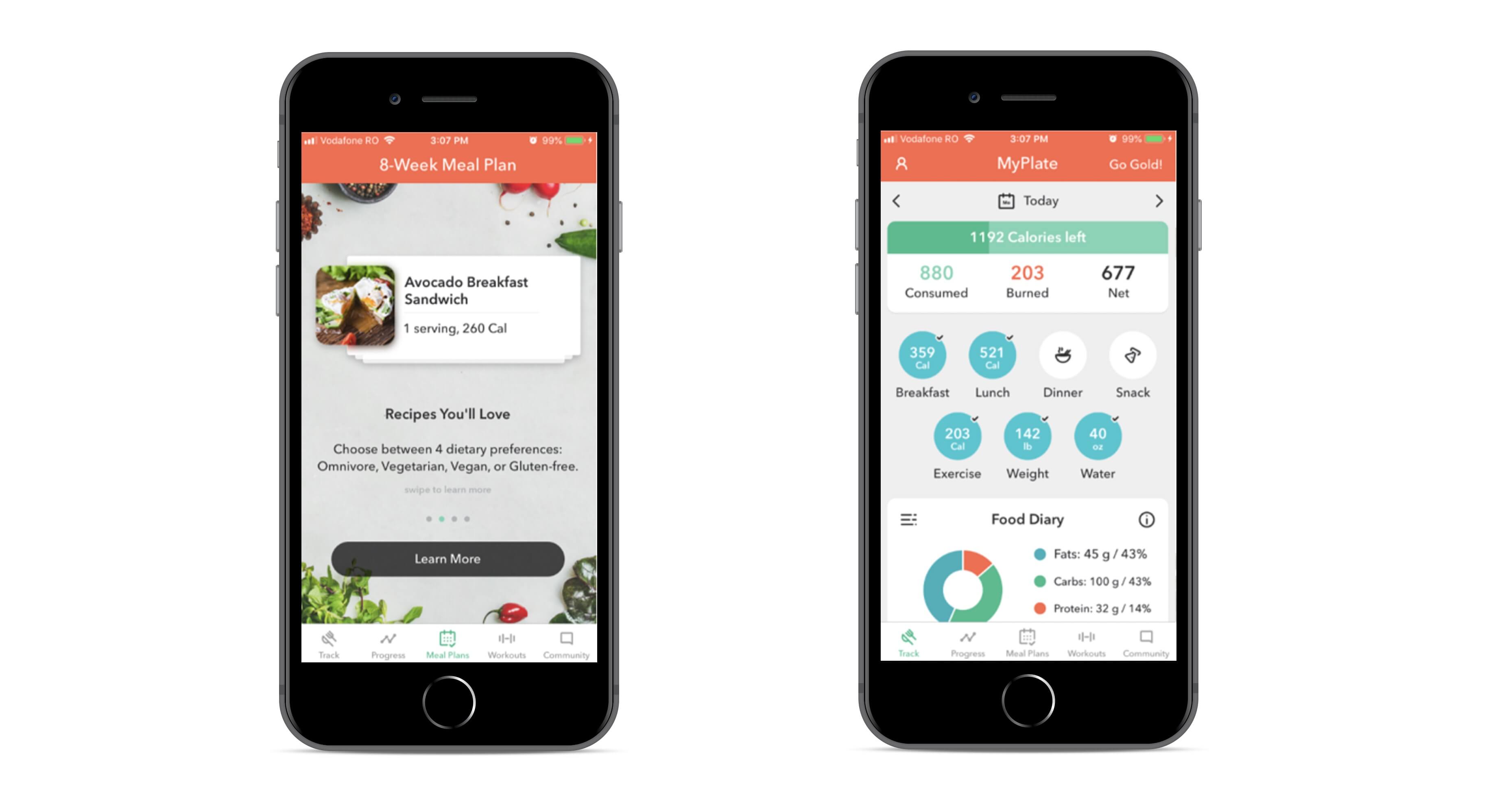
MyFitnessPal. This is another fitness diet app with a huge database of dishes to control your meal and fitness activity.
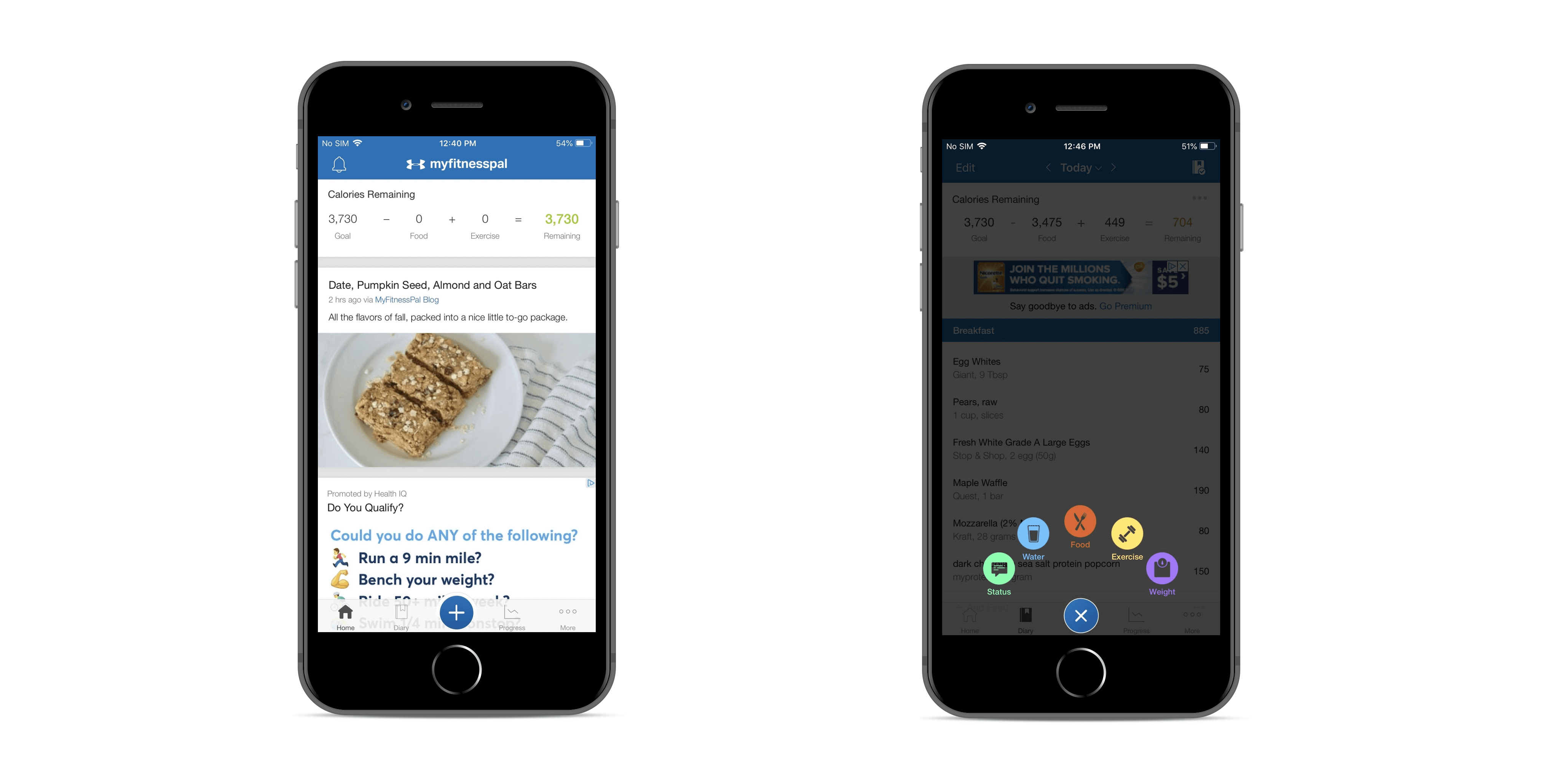
Lose It! This nutrition meal planning app has the most comprehensive progress charts and helps to track your weight loss journey while motivating and engaging users.
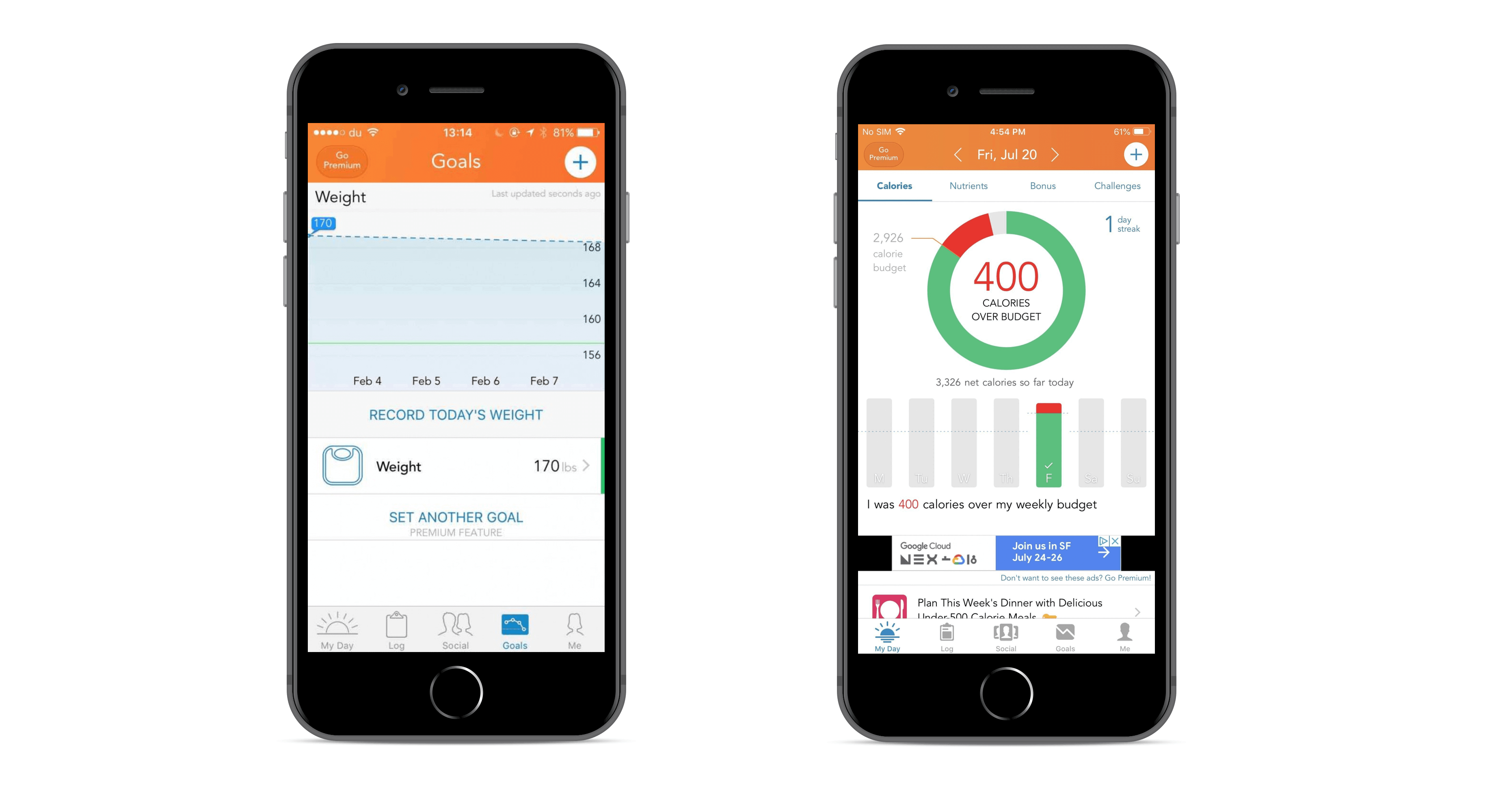
Now, let’s take a look at the technical part of weight loss app.
HOW TO CREATE YOUR OWN FITNESS APP
Must-have nutrition app features
After analyzing the niche of nutrition apps, we have gathered the essential features for fitness and diet apps, so your app meets user expectations. We strongly advise you to consider these features in your app MVP (minimum viable product) and integrate more complex ones during the second development stage.
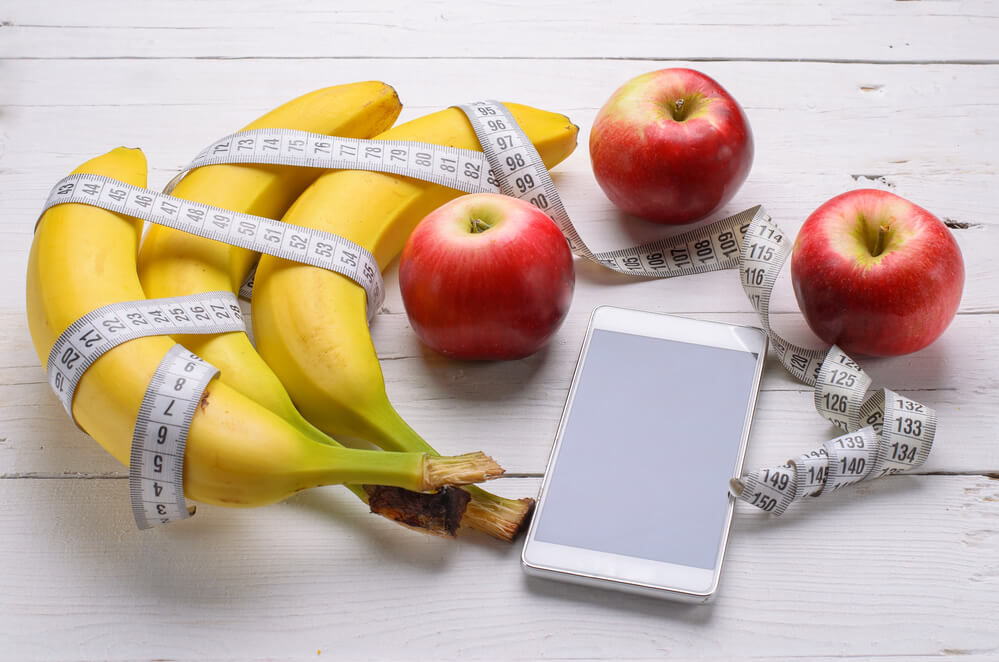
After the app user logs in to the nutrition app, one needs to insert height, weight, gender, lifestyle, and habits such as drinking, and smoking. This section may also include the user’s goal, which may be to lose, keep, or gain weight.
Depending on the user parameters and goals, the app should offer diet plan suggestions. This section should also include a comprehensive food dictionary so the user can manually input into a food journal which meals they have eaten, and use the calorie counter to calculate the total amount of calories received after every food intake.
To provide users with information on calories consumed, you can integrate the app with Apple Watch or other third-party wearable devices. Being worn 24/7 and connected to the app back-end, such devices send information about heart rate, distance covered by walking, cycling, swimming, running, etc.
The diet app should include statistics on the calories received and burned, and inform the user about one’s progress. Such a dashboard should include only essential information, present the stats in pie charts, or even animations, be clear and convenient.
Since you are developing a diet app for iOS, consider integrating third-party APIs such as Apple HealthKit. HealthKit has a central repository for health and fitness data, and it’s API is open. After receiving the user’s permission, HealthKit will send the user activity information directly to your app. To find out how the app asks for permission to share and read energy burned and other stats, check out the SpeedySloth example below.
let allTypes = Set([HKObjectType.workoutType(),
HKObjectType.quantityType(forIdentifier: .activeEnergyBurned)!,
HKObjectType.quantityType(forIdentifier: .distanceCycling)!,
HKObjectType.quantityType(forIdentifier: .distanceWalkingRunning)!,
HKObjectType.quantityType(forIdentifier: .heartRate)!])
healthStore.requestAuthorization(toShare: allTypes, read: allTypes) { (success, error) in
if !success {
// Handle the error here.
}
}
People also need motivators to move forward and reach their goals. Thus, push notifications are crucial here, since messages and calls to action will give them an extra boost to act, to eat proper food, or drink more water throughout the day.
Everybody is used for social networking. People want to share achieved goals, experiences, and thoughts – it’s motivating, inspiring, and encouraging. So, they expect to find a social button to do that in a matter of clicks.
To let users insert information more seamlessly about the food they have eaten, consider integrating a barcode scanner. Using this feature, nutrition apps users will scan barcodes with a mobile device camera and receive information on how nourishing these products and are. To add a barcode scanner, developers will use one of the following iOS SDK:
- ZBar bar code reader
- ShopSavvy
- Softek Barcode Reader SDK
- Scandit Barcode Scanner
Since you are now aware of the main features of your diet iOS app, let’s find out how much it costs to develop a diet app.
REASONS TO GIVE UP ON UBEREATS AND BUILD A RESTAURANT MOBILE APP
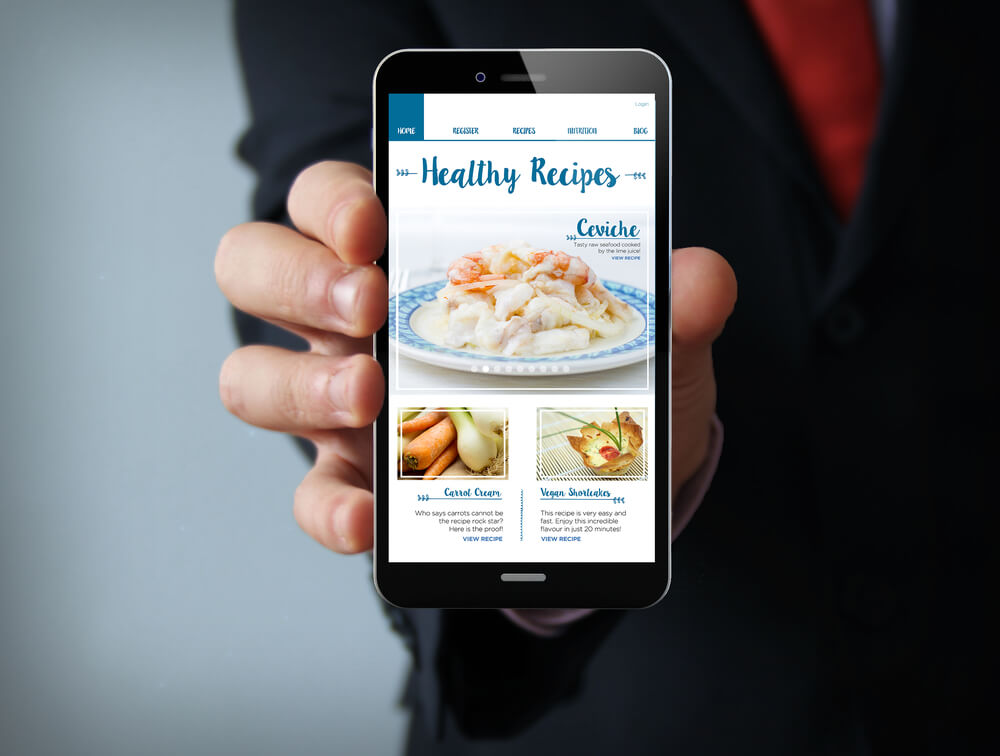
Considering Developing a Diet App?
Download Free EbookCost of diet and nutrition app development
The price to create an iOS diet app is calculated by the number of hours spent to cover all stages and tasks. Below we share a table with the app MVP features and estimation in hours.
| FeatureScreen | Functions required | BackEnd |
| User Profile | – Photo – Last Name, Given Name | 8 hours |
| Questionnaire after registration | – Enter Height, Weight, Gender – Healthy lifestyle/exercise – Drinking/Smoking – Food | 32 hours |
| Dashboard | – Calories used – Calories consumed – Quantity of steps by day – Amount of sleep – Add Physical activity | 76 hours |
| Meal API integration | – API investigation | 32 hours |
| HealthKit SDK integration | 24 hours | |
| Food Screen | – Add product/dish eaten – Calories, vitamins, carbons for the product – Recommended products, meals | 40 hours |
| Notifications | – Push notifications | 16 hours |
| Dashboard Diet record Screen | – Diet Type | 64 hours |
| Total | From 292 hours |
HOW MUCH DOES IT COST TO DEVELOP AN APP: DETAILED FEATURE BREAKDOWN
At this stage, also expect to pay for:
- Technical documentation with diet app requirements
- Design
- QA and bug fixing
![]()
The total cost of a diet mobile app for iOS varies depending on the app’s complexity, the number of third party integrations, nutrition app developer hourly rate, and degree of design customization.
On average, such nutrition apps cost from $30, 000 to $120,000.
Need a more accurate mobile app estimation?
Use a Project Cost CalculatorWhat our clients say
Related readings:
